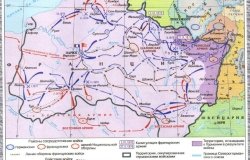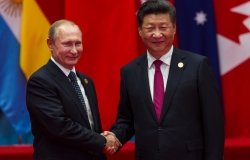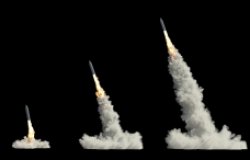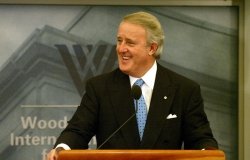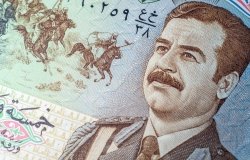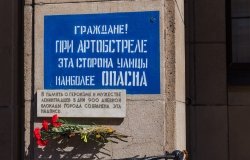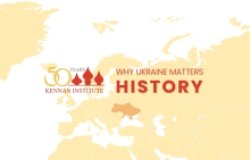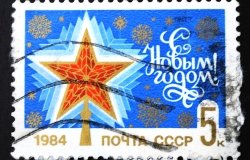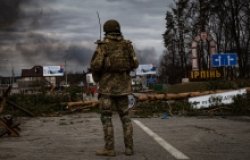Japan’s Relations with the Korean Peninsula, 1975
Click the image to be redirected to the Wilson Center's Digital Archive to view additional documents on Japan-Korea relations.
NKIDP e-Dossier no. 17
Japan’s Relations with the Korean Peninsula, 1975
Introduced by Kyungwon Choi
This e-Dossier introduces four documents which were recently obtained from the Diplomatic Archives of the Ministry of Foreign Affairs of Japan on Japan’s relations with, and the regional dynamics surrounding, the Korean Peninsula in 1975.
With the fall of Saigon on April 30, 1975, Kim Il Sung took a renewed interest in launching a military campaign to re-unify the Korean Peninsula. Kim Il Sung looked to China to support his plans to liberate South Korea, and during an April 1975 visit to Beijing, he allegedly sought both financial and material assistance from the PRC for an invasion of the south.[1] Kim Il Sung’s renewed militancy, as well as the situation in Vietnam, led to a reconsideration of the termination of the UN Command by the United States and South Korea.
Although the US and China shared a common desire to improve the security situation on the Korean Peninsula, the two sides were unable to find a mutually agreeable policy to achieve this objective in the early 1970s.[2] Given the difficulties in Sino-US relations, the US Department of State was tasked with analyzing and devising approaches which could improve the working relationship with their Chinese counterparts regarding regional issues, particularly the Korean question. China, however, proved to be uncooperative on issues which were directly linked to their internal security, such as Indochina and Korea.[3] While Sino-American relations were moving towards normalization, China’s behavior made it difficult for the US to forecast the cooperation between the two countries.[4]
It was within this complicated regional milieu that Japan’s Takeo Miki administration looked to craft a new long-term policy towards the Korean Peninsula. Under the leadership of Miki, Japan initiated steps toward achieving the peaceful coexistence of both the Democratic People’s Republic of Korea (DPRK) and the Republic of Korea (ROK) through the initiation of multilateral talks.
Document No. 1 contains the talking points for Prime Minister Miki’s meeting with US President Gerald Ford, which was held on August 5, 1975. The talking points suggest that Japan’s Ministry of Foreign Affairs had developed a policy framework toward the Korean Peninsula which centered on achieving the peaceful coexistence of the “Two Koreas” and supporting the entry of both countries into the United Nations as full members. The Japanese Foreign Ministry also suggested a direct dialogue between the United States and North Korea for exploratory purposes, which would eventually lead to a US-DPRK-ROK dialogue aimed at achieving a peace treaty. Although South Korea had an interest in participating in any US-DPRK dialogue, the Miki administration was more interested in bringing North Korea to the discussion table.
Interestingly, the Miki administration’s policy represented in the documents seems to reflect both the North and South Korean positions at the time. South Korea had maintained, since “the special declaration for foreign policy” on June 23, 1973, that North and South Korea ought to simultaneously enter the UN. On the other hand, North Korea had rejected this suggestion and, since March 27, 1974, had prioritized direct talks on converting the ceasefire agreement into a peace treaty with the United States. Both of these ideas were evident in the Japanese proposal on achieving peace in Korea.
The Japanese Foreign Ministry’s strategy for stabilizing relations between the two Koreas also reflected the Miki administration’s goal of eventually establishing diplomatic relations between Japan and North Korea. The Foreign Ministry paid close attention to the visits to North Korea made by Japanese politicians, regarding these visits as a potential opening towards the establishment of a diplomatic channel.
Document No. 2 and Document No. 3 contain the talks between Japanese Foreign Ministry’s officers and Liberal Democratic Party National Diet members who had voluntary visited North Korea. Upon their return to Tokyo, Diet members reported on North Korea’s political and economic situation, its international relations, the Kim Il Sung personality cult, and the possibility of the US and Japan exchanging recognition to Pyongyang. The Diet members had reportedly told their North Korean hosts that although “We [Japan] cannot suddenly change a policy that has been followed until now” and establish diplomatic relations with North Korea, they did explain that the two countries could increase exchanges over time. For the Japanese Ministry of Foreign Affairs, which had no formal diplomatic channels with Pyongyang, the Diet members provided not only invaluable firsthand information and insights about North Korea, but they had also laid the initial groundwork for relations between the two countries.
Document No. 4 contains the talking points prepared for Foreign Minister Miyazawa Kiichi prior to his meeting with Henry Kissinger in October 1975. Kissinger visited Japan while en route to China in order to build assurance for a cooperative dialogue among the signatories of the ceasefire agreement in Korea. Miyazawa, for his part, reminded Kissinger about a conversation the two had previously had in Washington regarding an exploratory bilateral US-North Korea dialogue. Miyazawa emphasized the necessity of China recognizing South Korea and involving Seoul as an equal player in the peace process. In the end, however, the Japanese initiative was not accepted because it was deemed too similar to the DPRK’s suggestion for a direct US-DPRK dialogue. The United States was concerned that the Japanese initiatives would weaken support for the ROK in the United Nations.[5]
Although the Japanese initiatives ultimately did not succeed, the significance of these efforts to change the security situation on the Korean Peninsula and foster peace on the Korean Peninsula should not be overlooked.[6] The influence of Japan’s emphasis on dialogue and, if possible, multilateral dialogue, has been evident since 1975. In many ways, the stepwise approach of the six-party talks, launched in 2003, mirrors the content of the Japanese initiatives from the 1970s.[7]
List of Documents
Document No. 1
Talking Points for the Prime Minister Miki – President Ford Meeting, 25 July 1975
[Source: Diplomatic Archives of the Ministry of Foreign Affairs of Japan. Obtained by Kyungwon Choi (Kyushu University) and translated by Ryo C. Kato.]
Document No. 2
Voluntary Liberal Democratic Party MP North Korea Visit, 11 August 1975
[Source: Diplomatic Archives of the Ministry of Foreign Affairs of Japan. Obtained by Kyungwon Choi (Kyushu University) and translated by Ryo C. Kato.]
Document No. 3
Voluntary Liberal Democratic Party MP North Korea Visit (Part 2), 18 August 1975
[Source: Diplomatic Archives of the Ministry of Foreign Affairs of Japan. Obtained by Kyungwon Choi (Kyushu University) and translated by Ryo C. Kato.]
Document No. 4
Talking Points for the Minister of Foreign Affairs Miyazawa – Secretary of State Kissinger Meeting, 15 October 1975
[Source: Diplomatic Archives of the Ministry of Foreign Affairs of Japan. Obtained by Kyungwon Choi (Kyushu University) and translated by Ryo C. Kato.]
Click here to be redirected to the Wilson Center's Digital Archive to view additional documents on Japan-Korea relations.
[1]Ria Chae, “East German Documents on Kim Il Sung’s April 1975 Trip to Beijing,” NKIDP e-Dossier no. 7 (May 2012).
[2] See, for example “Memorandum of Conversation, subject: Korea, Japan, South Asia, Soviet Union, Arms Control,” October 22, 1971, and “Memorandum of Conversation,” February 23, 1972.
[3]“Memorandum From the Assistant Secretary of State for East Asian and Pacific Affairs (Habib), the Deputy Assistant Secretary of State for East Asian and Pacific Affairs (Gleysteen), the Director of the Policy Planning Staff (Lord), and Richard H. Solomon of the National Security Council Staff to Secretary of State Kissinger,” May 8, 1975, in Foreign Relations of United States, 1969-1976, Volume XVIII, China, 1973-1976 (Washington, DC: US Government Printing Office, 2008), 661-665.
[4] “Memorandum From the Assistant Secretary of State for East Asian and Pacific Affairs (Habib), the Deputy Assistant Secretary of State for East Asian and Pacific Affairs (Gleysteen), the Director of the Policy Planning Staff (Lord), and Richard H. Solomon of the National Security Council Staff to Secretary of State Kissinger,” July 3, 1975, in Foreign Relations of United States, 1969-1976, Volume XVIII, China, 1973-1976, 675-696, available at https://history.state.gov/historicaldocuments/frus1969-76v18/d112.
[5]“The Secretary's 8:00 a.m. Staff Meeting: Thursday, November 13, 1975,” Digital National Security Archive.
[6] Kyungwon Choi, Reisenki Nikkan Anzenhosho Kankei no Keisei (The Formation of the Japan-South Korea Security Relationship during the Cold War) (Tokyo: Keiōgijukudaigaku shuppan-kai, 2014), 226-232.
[7] Masao Okonogi, “Kakuheiki to Kimyonakyouson-chosenhanto no chiikichituzyo,” in Masao Okonogi and Chung-in Moon ed., Higashiazia chiiki to kyodotaikoso, Keio University Press, 2009. 23-28.
About the Author
Kyungwon Choi
Read More
North Korea International Documentation Project
The North Korea International Documentation Project serves as an informational clearinghouse on North Korea for the scholarly and policymaking communities, disseminating documents on the DPRK from its former communist allies that provide valuable insight into the actions and nature of the North Korean state. It is part of the Wilson Center's History and Public Policy Program. Read more

Cold War International History Project
The Cold War International History Project supports the full and prompt release of historical materials by governments on all sides of the Cold War. Through an award winning Digital Archive, the Project allows scholars, journalists, students, and the interested public to reassess the Cold War and its many contemporary legacies. It is part of the Wilson Center's History and Public Policy Program. Read more

History and Public Policy Program
The History and Public Policy Program makes public the primary source record of 20th and 21st century international history from repositories around the world, facilitates scholarship based on those records, and uses these materials to provide context for classroom, public, and policy debates on global affairs. Read more
